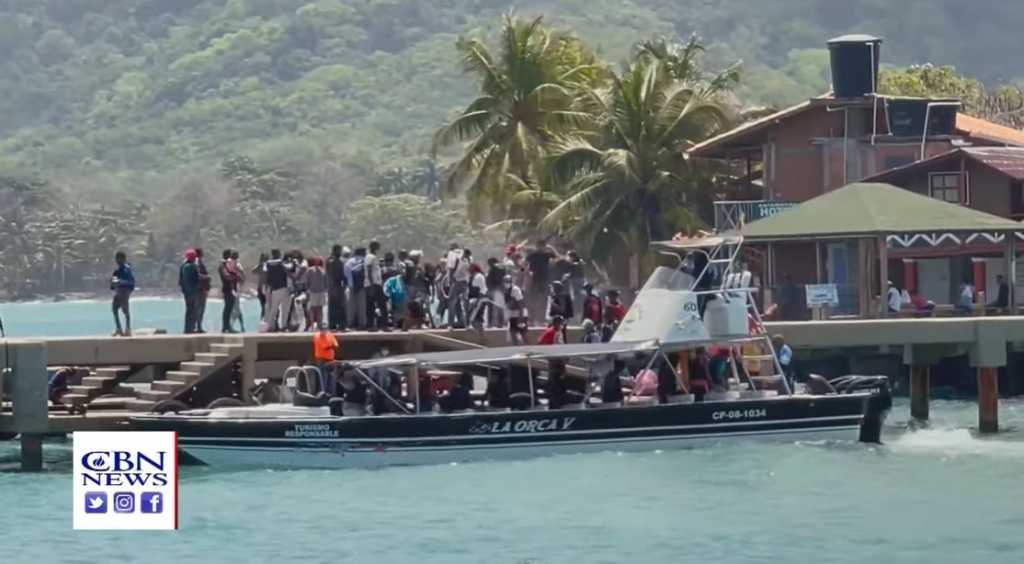The unfolding human tragedy along the U.S. southern border is also getting attention from transnational drug cartels, and they’ve been working hard to take advantage of the chaos.
WATCH THE FULL REPORT:
Every day, boats arrive here in the tiny Colombian border town of Capurgana. But these aren’t tourists, they are migrants from all across the globe.
“It’s a humanitarian crisis. Most of them are from Africa, Pakistan, India, Haiti, and some Cubans,” resident Joseph Silver said.
What should be an out-of-the-way fishing village has become the last off-ramp on a human trafficking highway that plunges right through the forbidding Darien Gap. These migrants aren’t customers, they are products. And their desire to make it to the U.S. means big profits for the smugglers who send them into the jungle.
“I don’t normally like to talk too loudly around here but basically that’s what they do,” Silver said. “They pay the young kids here to be the mules and take them over the mountains or through the San Blas.”
***As the number of voices facing big-tech censorship continues to grow, please sign up for CBN Newsletters and download the CBN News app to stay up-to-date with the latest news from a distinctly Christian perspective.***

But there’s another commodity here that’s even more profitable these days: Cocaine. This country has always been the number one exporter of this illicit drug, but the amount being grown in Colombia today is near an all-time high.
Colombian Senator Maria Fernanda Cabal said, “With President Uribe, we got as small as 40,000 hectares. With President Santos, who sold to the world that he was the peacemaker, we are getting to 300,000 hectares.”
Eradication efforts haven’t been as effective in recent years due to concerns about the health risks of spraying coca fields from the air.
Sen. Cabal said, “We have sixteen soldiers, policemen, and eradicators killed by mines because the guerrillas put mines everywhere around.”
CBN News wanted to track a group of migrants we saw going into the Darien Gap on the Colombia side when they came out the other end. So this reporter took a quick flight to Panama to the other side of the Darien to try and meet up with them. The drug cartels are recruiting young local guys wearing backpacks full of drugs and then salting them in among the migrants. The migrants then get preferential treatment at the border as the officials look the other way, so that allows these guys to get their drugs north without being stopped at the border.
CBN News made it to the camp where the migrants were being kept, but COVID restrictions kept us from entering. We did manage to get through to a 16-year-old Haitian migrant named Madeisy on the phone.
Madeisy told us the journey had been harrowing. “Many people died. One woman drowned, and two other men lost their wives. Many people died,” she said.
In all, 12 of the 70 or so migrants we witnessed at the start of their journey did not survive, including a 10-month-old baby who succumbed to dysentery. In addition, she told us the entire group was robbed at gunpoint, and at least a dozen women were raped by cartel members.
Still, they keep coming. Locals say the number of migrants is up fourfold in the last two months. The flow of cocaine is keeping pace – Panama seized more than 1.5 tons a week for the past year. But while the cartels have to evade authorities to move their drugs, the flow of people is much easier, because the migrants get support from local governments as they transit Central America.
Former ICE agent Victor Avila told us, “We used to have human traffickers and drug traffickers. Well, that no longer exists. It’s now all the cartels. You will encounter the cartels, you will have to pay the piso, the plaza, the cuota to them, whether you are going to turn yourself in or not, these people are paying $3,500, $4,000 a head, to even turn themselves in to seek asylum.”
So whether it’s Haitians or heroin, Cubans or cocaine, the narcos are getting rich either way.


